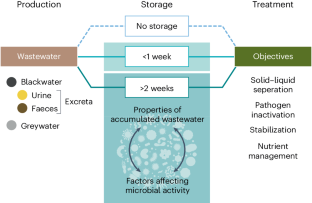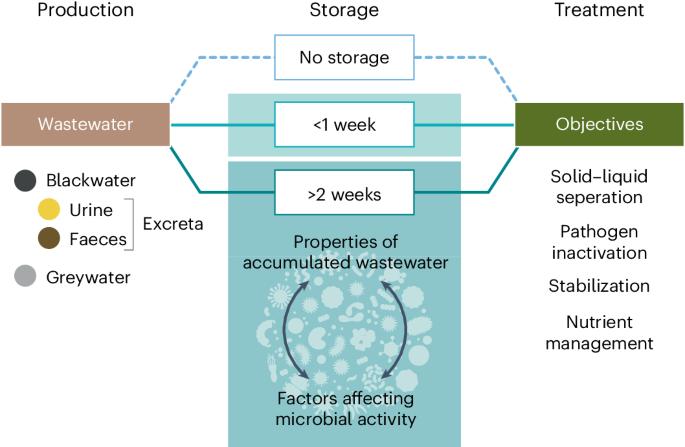Integrating recent scientific advances to enhance non-sewered sanitation in urban areas
IF 24.1
引用次数: 0
Abstract
Half of the world’s population is now served by non-sewered sanitation, yet the field remains fragmented, with a focus on individual research agendas, and prevalence of imprecise terminology that hinders scientific learnings and leads to misconceptions. The field is at a decisive juncture, with scientific knowledge taking off that holds the potential to fulfil the urgent need for inclusive sanitation in a rapidly urbanizing world. In this critical Review, relevant and diverse research results are assembled with findings translated to one consistent terminology, to provide scientific evidence to draw out interlinkages and learnings, debunk common misconceptions and identify key research needs. Properties of non-sewered wastewater are highly variable, and degradation during storage has a direct impact on greenhouse gas emissions and downstream treatment processes, which facilitate different resource recovery. New technologies and wastewater-based epidemiology can help to address the lack of monitoring. The findings are presented by wastewater properties, biological processes during storage, treatment processes and monitoring. Recent learnings in non-sewered sanitation remain fragmented; this Review integrates findings into one consistent terminology to identify synergies in scientific findings and explore future potential application of new technologies.


结合最新科学进步,加强城市地区的非污水处理卫生设施
目前,世界上有一半人口使用无污水排放的卫生设施,但这一领域仍然支离破碎,研究议程各自为政,不精确的术语盛行,阻碍了科学学习,导致误解。该领域正处于一个决定性的关口,科学知识正在兴起,有可能满足快速城市化世界对包容性卫生设施的迫切需求。在这篇重要的综述中,汇集了相关的各种研究成果,并将研究结果转化为统一的术语,以提供科学证据,从而找出相互联系和经验教训,揭穿常见的误解,并确定关键的研究需求。非污水处理废水的性质千变万化,储存过程中的降解对温室气体排放和下游处理工艺有直接影响,从而促进不同的资源回收。新技术和基于废水的流行病学有助于解决缺乏监测的问题。研究结果按废水特性、储存期间的生物过程、处理过程和监测进行介绍。非污水处理卫生设施方面的最新研究成果仍然支离破碎;本综述将研究成果整合为一个统一的术语,以确定科学发现的协同作用,并探索新技术未来的潜在应用。
本文章由计算机程序翻译,如有差异,请以英文原文为准。
求助全文
约1分钟内获得全文
求助全文

 求助内容:
求助内容: 应助结果提醒方式:
应助结果提醒方式:


